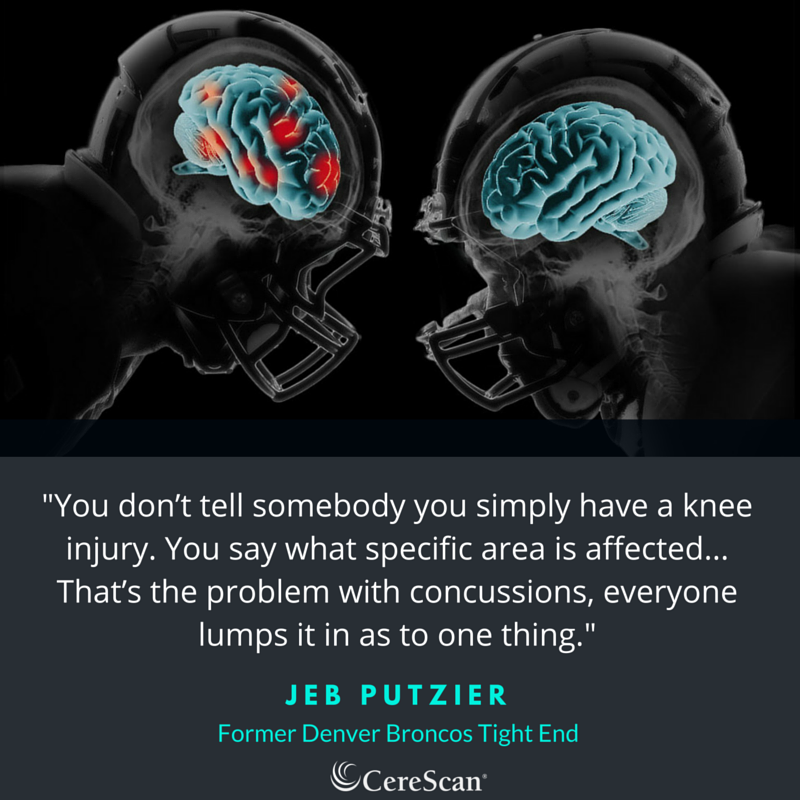The Dangers of Football: How Football Concussions Affect Your Brain
Is a Little Bump on the Head That Serious?
First off, define “little." According to the Mayo Clinic, a minor concussion injury might cause a bump or bruise, but no deep cuts. Any loss of consciousness is no longer minor. Symptoms can include:
Mild headache
Temporary nausea
Mild, temporary dizziness
Mild, temporary blurred vision
If your child experiences some mild symptoms after a bump or blows to the head, they won't usually require anything more than quiet rest, close observation and nutritional meals. Some doctors will recommend a CT scan in an abundance of caution.
The overt symptoms from a minor concussion typically resolve within several days to weeks. However, scientific evidence suggests athletes may have persistent brain damage after injury. This form of brain microdamage is not seen on common MRI or CT scans.
Some of the damage accumulates with microdamage from the next injury. A series of small traumas can have the same cumulative effect as one major trauma.
Is a Little Bump on the Head That Serious?
First off, define “little." According to the Mayo Clinic, a minor concussion injury might cause a bump or bruise, but no deep cuts. Any loss of consciousness is no longer minor. Symptoms can include:
Mild headache
Temporary nausea
Mild, temporary dizziness
Mild, temporary blurred vision
If your child experiences some mild symptoms after a bump or blows to the head, they won't usually require anything more than quiet rest, close observation and nutritional meals. Some doctors will recommend a CT scan in an abundance of caution.
The overt symptoms from a minor concussion typically resolve within several days to weeks. However, scientific evidence suggests athletes may have persistent brain damage after injury. This form of brain microdamage is not seen on common MRI or CT scans.
Some of the damage accumulates with microdamage from the next injury. A series of small traumas can have the same cumulative effect as one major trauma.
Signs of Traumatic Brain Injury
If you see any of the below symptoms in a child after a concussion, please seek medical attention immediately. It is better to be cautious.
Unconsciousness, even if for a few seconds
Seizure
Difficulty staying awake or extreme tiredness
Clear fluid leaking from the nose or ears (even several days later)
Difficulty speaking, such as slurred speech
Difficulty understanding what people say
Difficulty reading or writing
Difficulty walking or balancing
Bleeding or bruising from or behind one or both ears
Any sign of skull damage or a penetrating head injury
Weakness or loss of feeling in any part of the body
Blurred or double vision
Memory loss or confusion, even for a few minutes
Severe or persistent headache
Vomiting
Change in behaviour
For children in organized sports, a head injury is a real and ongoing concern. The NFL, Pop Warner, and USA Football have all issued specific guidelines regarding children and tackle football.
The Dangers of Football
The tough physical training and aggressive play are part of the reason that American football is popular, but what is the real risk?
Pediatricians and parents alike caution against risking short- or long-term injury.
With certain precautions, some play is safe. However, many people now recommend that players under the age of 12 skip tackle football entirely. Children between 12 and 15 years of age should be trained in modified games and avoid contact sports until at least high school.
Because head injuries are cumulative, all organized leagues now use extreme caution when beginning contact play. In an ideal world, kids stick with flag (or non-contact) football until they are at least 13 years old.
The advocacy group Practice Like Pros (made up of doctors and former professional players) also strongly recommended no contact before high school.
Minimum League Precautions
Regardless of the sports league or whether or not contact during play is planned, parents should plan to:
Consult a physician prior to play
Get a baseline concussion test
Make sure the child is physically fit to play
Provide the correct size equipment in good repair
A pre-participation physical exam is often required before joining a team. It is to reduce risks of unknown illnesses (like asthma or a heart condition) before play.
A baseline concussion test administered by a trained professional is a precaution against brain injury. It helps to establish the severity of a brain injury in case of an accident.
Physical fitness is part of the expected parental preparation. Athletes should have flexibility, strength, and stamina to be ready for team play.
Guide your child's diet to include plenty of vegetables and fruit. If your child is not a well-rounded eater, plan on providing nutritional supplements for growth and injury recovery.
What Leagues Are Doing
The two largest youth football leagues in the U.S. have collaborated with the CDC in an attempt to prevent head injuries. The tackle football league, Pop Warner, forms age and weight-based teams to reduce disparities between opposing players.
It also regulates total contact play in both practice and gameplay.
Full speed, head-on blocking or tackling drills are prohibited if the players line up more than 3 yards apart. Additionally, all Pop Warner coaches are required to attend “Heads Up” training to minimize injury.
USA Football advocates flag football until children are physically ready for training in proper contact. They operate a "Rookie Tackle" program for 10 - 12 year olds. This program minimizes contact and emphasizes correct technique and injury prevention.
Rookie Tackle for Fewer Injuries
Parents have the final decision as to whether or not their children are permitted to play tackle football before high school. Rookie tackle is meant to transition children from no contact to modified or minimal contact.
Highlights are:
Smaller playing field (40 yards by 35 yards)
Reduced player speed and momentum
Small teams of 6, 7, or 8 persons
Every player except the centre starts in a two-point stance
Centres are uncovered
No special teams or blitzing
All ball possessions begin at the 40-yard line
Coaches may step on the field
Running clock
These rules allow for the safe physical conditioning of athletes as well as training in proper technique. Both Pop Warner Football and USA Football have injury rates below the all children head injury rates.
Let Them Play
The dangers of football and cumulative neurological damage are concerns for all parents. However, with proper precautions and an emphasis on safety, children as young as age 7 can safely play non-contact sports.
Flag football followed in later years by modified tackle and finally tackle football are excellent physical training.
Would you like to learn more about traumatic brain injury? Check out our blog.
And as always, I value your feedback. Comment below or drop me a line to let me know what you think or how a concussion has affected your life.



